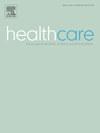全球流行病中的临床决策支持:近实时反馈在推进外科患者适当的出院后阿片类药物处方中的价值
IF 2.1
4区 医学
Q3 HEALTH POLICY & SERVICES
Healthcare-The Journal of Delivery Science and Innovation
Pub Date : 2025-05-17
DOI:10.1016/j.hjdsi.2025.100764
引用次数: 0
摘要
实施教训非循证因素影响术后阿片类药物处方操作。提供近乎实时的自动化阿片类药物处方反馈可能会鼓励提供者开出更符合患者消费和机构指南的阿片类药物数量。COVID-19给医疗服务带来了前所未有的挑战。我们观察到,在最初爆发期间,指南一致的阿片类药物处方存在重大偏差。然而,我们机构已有的阿片类药物处方反馈系统和决策辅助可能通过通知处方者非典型的大阿片类药物处方和鼓励使用机构数据来帮助限制观察到的偏差的持续时间和程度。与提供者教育相结合,以近距离实时电子邮件反馈形式提供的非指导性决策援助可能是推进循证阿片类药物处方的有效机制,因为它在鼓励数据驱动决策的同时保留了灵活性和提供者自主权。本文章由计算机程序翻译,如有差异,请以英文原文为准。
Clinical decision support amidst a global pandemic: Value of near real-time feedback in advancing appropriate post-discharge opioid prescribing for surgical patients
Implementation lessons
Non-evidence based factors influence post-surgical opioid prescribing practices. Delivering automated near real-time opioid prescribing feedback may encourage providers to prescribe opioid quantities which are more aligned with patient consumption and institutional guidelines.
COVID-19 presented unprecedented challenges to healthcare delivery. We observed a substantial deviation in guideline-concordant opioids prescribing during the initial outbreak. However, our institution's pre-existing opioid prescribing feedback system and decision aid may have helped limit the duration and magnitude of the observed deviations by informing prescribers of atypically large opioid prescriptions and encouraging use of institutional data.
Combined with provider education, a non-directive decision aid, in the form of near, real-time email feedback, may be an effective mechanism to advance evidence-based opioid prescribing, as it retains flexibility and provider autonomy while encouraging data-driven decision making.
求助全文
通过发布文献求助,成功后即可免费获取论文全文。
去求助
来源期刊

Healthcare-The Journal of Delivery Science and Innovation
HEALTH POLICY & SERVICES-
CiteScore
4.90
自引率
0.00%
发文量
37
期刊介绍:
HealthCare: The Journal of Delivery Science and Innovation is a quarterly journal. The journal promotes cutting edge research on innovation in healthcare delivery, including improvements in systems, processes, management, and applied information technology.
The journal welcomes submissions of original research articles, case studies capturing "policy to practice" or "implementation of best practices", commentaries, and critical reviews of relevant novel programs and products. The scope of the journal includes topics directly related to delivering healthcare, such as:
● Care redesign
● Applied health IT
● Payment innovation
● Managerial innovation
● Quality improvement (QI) research
● New training and education models
● Comparative delivery innovation
 求助内容:
求助内容: 应助结果提醒方式:
应助结果提醒方式:


